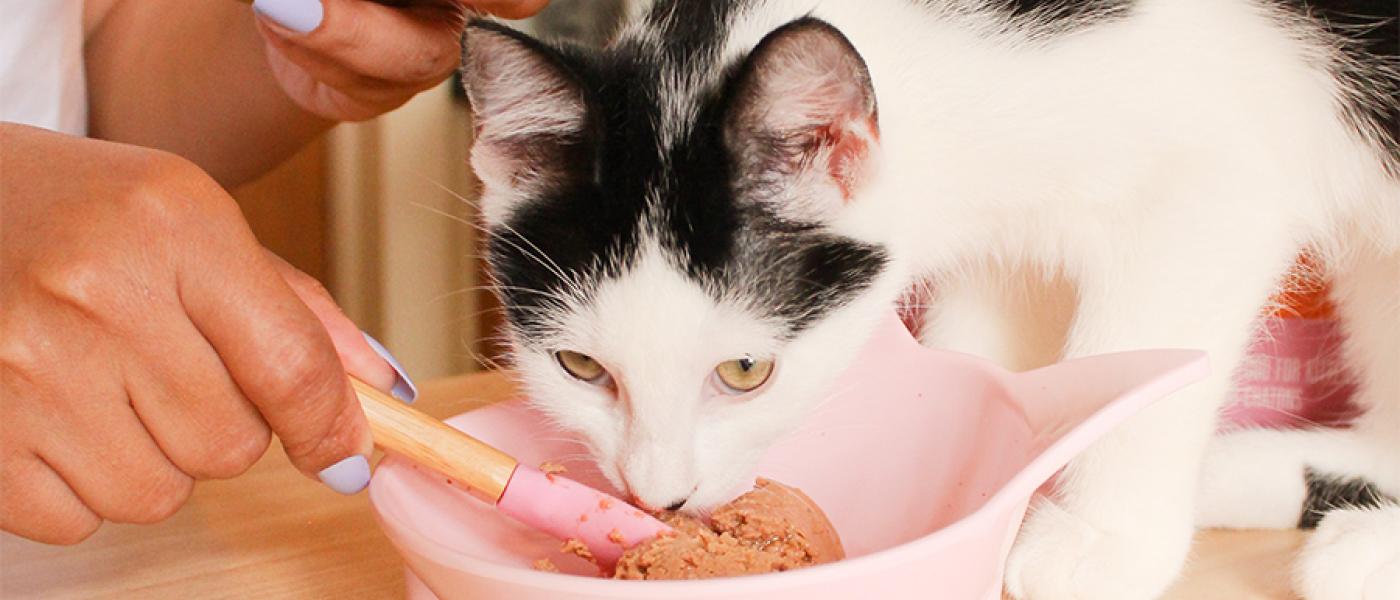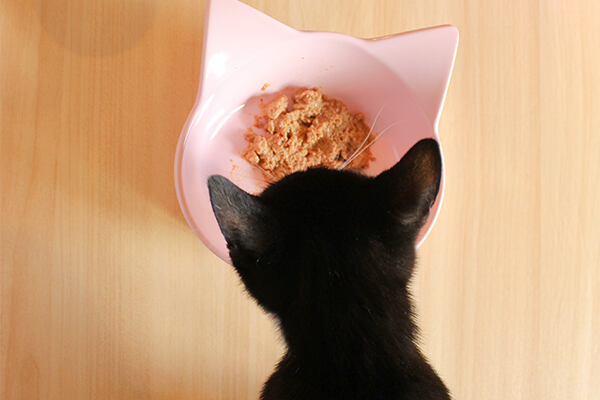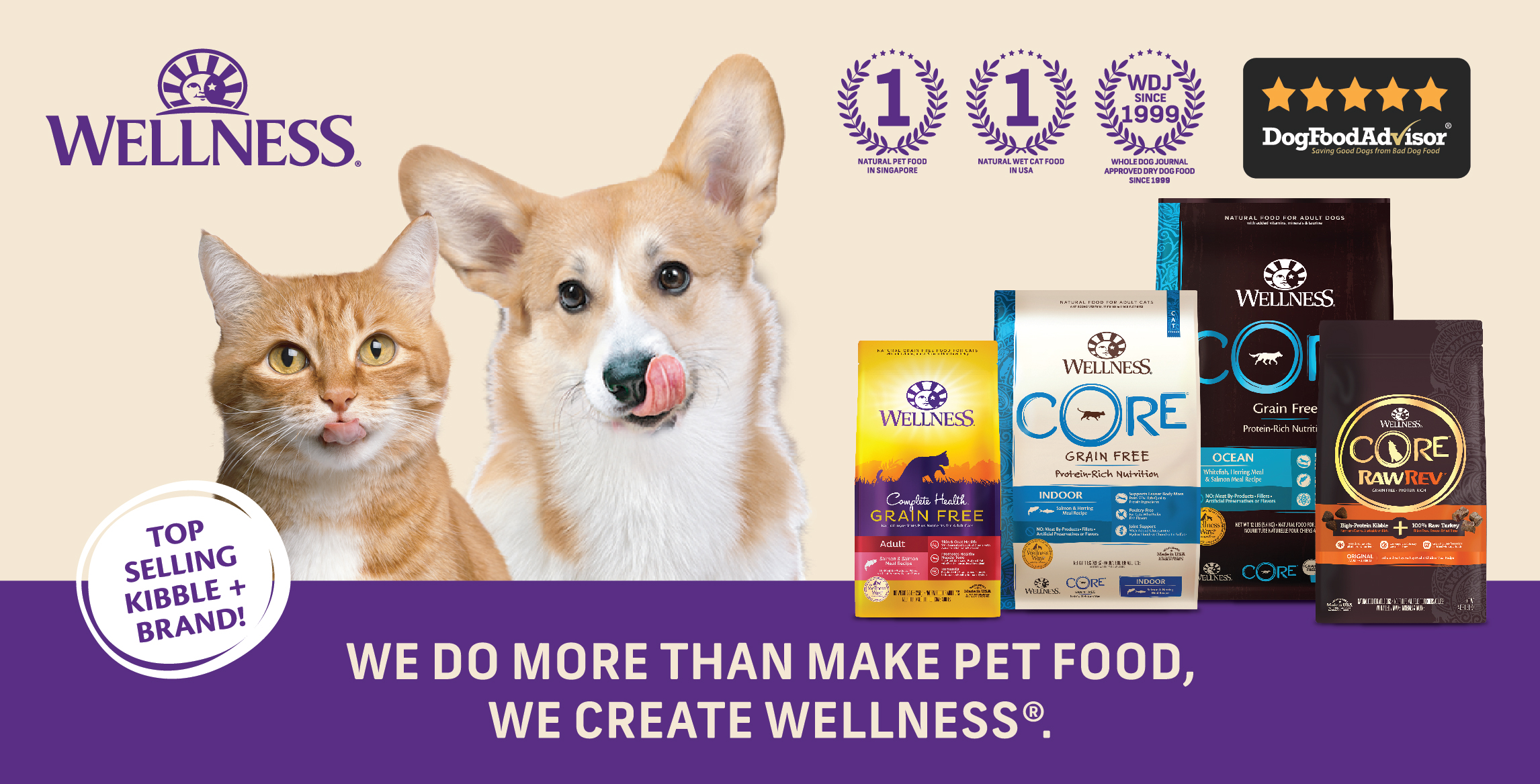Healthy Wet Cat Food: The Best Wet Foods for Kittens

Wet food is a great choice for kittens and adult cats with all types of dietary needs. It comes with many nutritional benefits, and it can even help keep your feline friend hydrated! Learn more about healthy wet foods for kittens, including their benefits, the different types and flavors, the best wet cat food recipes for your kitten, and much more.
BENEFITS OF WET FOODS FOR KITTENS AND CATS
Cats are carnivores, which means they need to eat meat to fulfill their protein needs. Sufficient calories, protein, and other wholesome nutrients are always important for your cat, but they are especially crucial for growing kittens during the weaning stage.
Let’s compare dry and wet foods for kittens to understand what makes wet foods so beneficial for your cat.
How to know if dry cat food isn’t right for your kitten
While dry kitten kibble is a convenient and low-cost option for cat owners, they typically aren’t made with real meat and don’t contain enough protein for your kitten’s needs. In addition, dry food for cats and kittens often contains a lot of carbohydrates, calories, and sugars. These are all bad for your kitten’s health – similar to junk food for humans!
Although dry cat food comes in many flavors and styles, it often also contains artificial flavors and harmful ingredients that are not the best for your feline friend. If you choose to feed your kitten dry food, ensure you choose a recipe that contains wholesome, natural ingredients to support your cat’s health.
If your kitten is experiencing tummy troubles, having difficulty excreting waste, or hacking up a lot of hairballs, these might be signs that it’s time to change something in their diet.
How wet kitten food delivers nutrition and hydration

Wet foods for kittens usually contain real meat, other healthy ingredients, and water content to help keep your cat hydrated. The water content is especially helpful because many cats instinctually avoid stagnant water, which can be a source of diseases and bacteria outdoors. This makes wet foods helpful for cat owners who struggle to keep their kittens hydrated.
Wet cat food also tends to be easier to chew and digest, making it ideal for kittens with sensitive stomachs or other issues. When you feed your cat healthy, nutritious, wet food, you support their dietary needs, digestion, and the health of their coat, heart, eyes, and more.
You can get healthy wet cat food in various types and flavors, so even if you have a picky kitten, you’re sure to find juicy, delicious options your cat will love while getting the protein, water, and other nutrients they need to stay healthy.
TYPES AND FLAVORS OF WET KITTEN FOOD

Cats can be fussy eaters and may get bored of eating the same food, even foods they used to enjoy. A good balance between various flavors and textures of wet cat food, along with occasional treats, can help ensure your kitten will get the variety they crave to stay interested in their meals.
Here are some common flavors of wet kitten food that your cat may enjoy:
- Seafood, such as salmon, tuna, or other fish
- Chicken or turkey
- Lamb
- Beef
- Combination flavors, such as chicken and lamb
Don’t be surprised if it takes a few tries to find the right flavor to satisfy your kitten. Once you do, you may find that your cat’s energy and affection will increase.
Besides different cat food flavors, you can also select various textures to feed your kitten:
- Pâté cat food: pâté is finely chopped or pureed meat. Pâté cat food often comes conveniently pre-portioned and compressed in a can or pouch. However, this can make pâté more solid than other wet cat foods, so you may want to try using a fork to break it up so that it’s easier to eat.
- Cat food in gravy: your kitten may enjoy larger chunks of meat in a thick gravy. This flavorful option tends to be a cat favorite, but it may also be higher in calories, so ensure you keep an eye on the portion size to avoid overfeeding your kitten.
- Cat food in broth: this option is similar to cat food in gravy. The biggest difference is the consistency of the liquid, since broth is not as thick as gravy. Some cat food in broth may come with vegetables, which can be helpful and nutritious. You may also find plain broth, which you can add to other food or serve plain to your kitten.
- Flaked cat food: while cat food in gravy or broth usually has larger chunks of meat, flaked cat food or stew uses smaller pieces of meat, which may be better for smaller cats and kittens. This wet cat food option sometimes has tasty add-ins like cheese, vegetables, or bacon for additional nutrition and flavor.
- Shredded cat food: instead of meat chunks, the protein in shredded cat food comes in longer, thinner pieces. This option usually comes in broth or water, but you may also find some shredded cat food options in gravy.
These wet cat food options usually come in cans or pouches. If they come canned, check the nutritional facts on the can’s label to avoid feeding your kitten unnatural ingredients or preservatives. Read our explanation of how a cat decides if a wet food is good to see our complete wet cat food dictionary and more.
WHAT TO LOOK FOR IN YOUR WET KITTEN FOOD
All types of cat food, including wet cat food, come with varying ingredients and nutritional content. This variety helps cat owners find the right recipe for their feline friends, from kittens to older cats.
Some things you might want to look for can vary depending on your cat’s needs, such as:
- Complete vs. complementary: do you want to give the product to your kitten as a complete meal or add in some wet food to complement their diet? Complementary food does not contain all the vitamins and minerals your cat needs, so you should only provide this food occasionally or along with a complete and balanced food.
- Sensitive stomach: if your cat is experiencing tummy troubles, you may want to look for a recipe specifically designed with natural, easily digestible ingredients. For example, Wellness CORE Digestive Health recipes contain digestive enzymes, prebiotic fibers, and probiotics for a highly digestible food that supports your cat’s health.
- Nutritional profile: your cat’s dietary needs are likely to change throughout different life stages. For example:
- Kittens typically need high protein, especially while weaning.
- Older male cats experiencing urinary tract infections and urinary blockages may benefit from food with low ash content.
Other, more general traits of high-quality cat food include:
- Meat is listed as the first ingredient instead of corn products or carbohydrates
- Zinc and fatty acids for healthy skin and coats
- Vitamins and minerals
- Healthy fats
- Probiotics
- No added preservatives or coloring
- Natural ingredients and flavoring
Read our checklist of the top 5 healthy cat food ingredients to learn more. You should consult with your vet to ensure you know what nutritional profile to aim for when it comes to your unique kitten. This will help your cat maintain their ideal weight and promote healthy digestive and urinary systems.
THE BEST WET CAT FOOD FOR YOUR KITTEN
Wellness Pet Food wet cat food recipes are lovingly crafted with natural, premium proteins, antioxidants, balanced nutrients, and controlled minerals. Here are some of our most popular wet foods for kittens:
- CORE® Digestive Health Paté: turkey is our highest-rated flavor, but this gut-supporting, healthy wet cat food recipe also comes in chicken, whitefish, and salmon. This recipe is approved for cats in all life stages, but if you’re feeding a kitten, you can feed up to twice the adult amount to support their rapid growth and development.
- Complete Health™ Pâté: our Whitefish & Tuna and Chicken flavors are the perfect Complete Health pâté recipes for your kitten.
- CORE Pâté: our chicken & turkey liver flavor combination is enticing, perfectly balanced, and specially designed for your kitten.
Not sure where to start? Get our Complete Health Pâté Variety Pack for kittens! It comes with six chicken entrée cans and six whitefish & tuna entrée cans, each carefully crafted with natural, wholesome ingredients to fuel your kitten’s growth and play.
TIPS FOR INTRODUCING WET FOOD TO YOUR KITTEN OR CAT
It can be challenging to find the perfect healthy wet cat food flavor and texture for your cat. It helps to expose your kitten to dry and wet foods of all flavors and textures from an early age.
- Remember to consult your vet before changing your kitten’s daily diet.
- Transition between foods slowly – over 7-10 days if possible – to avoid upsetting your cat’s stomach.
- Add some of their favorite treats or flavors to entice picky kittens.
- Test various textures to find the perfect one for your cat.
Are you ready to get started feeding your kitten some delicious, nutritious, healthy wet cat food that supports a lifetime of wellbeing?





